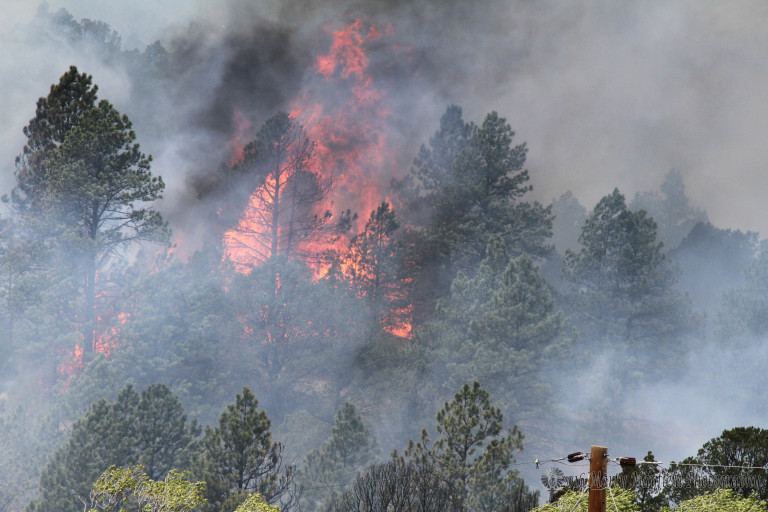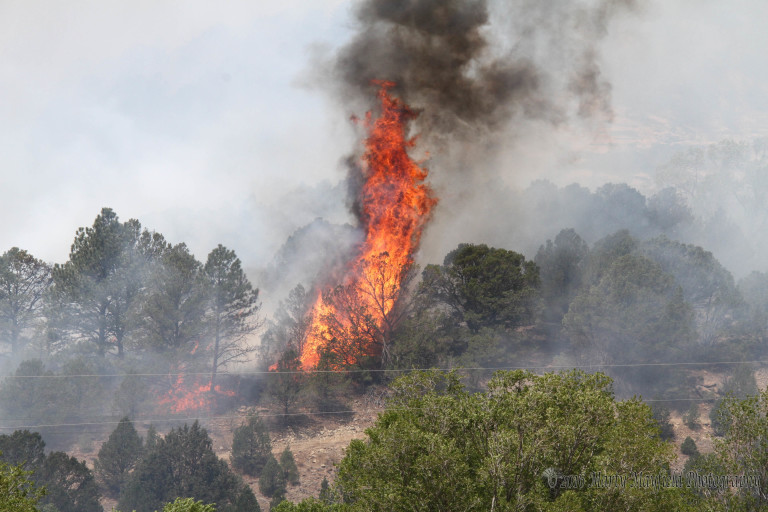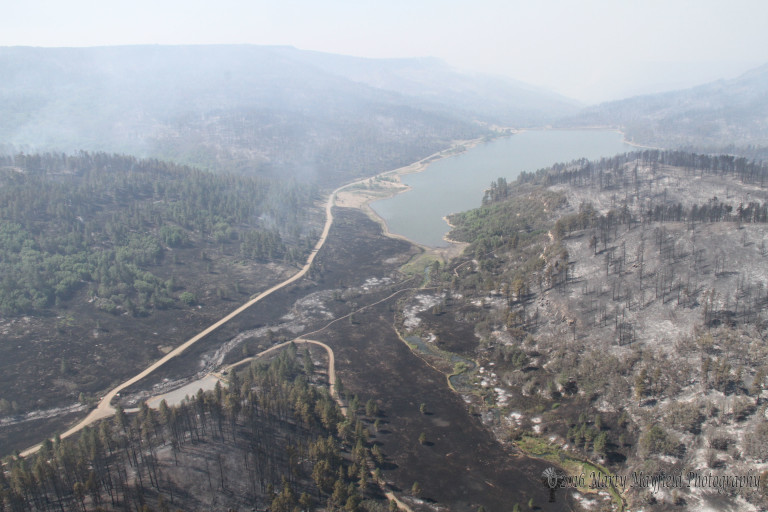by Marty Mayfield
KRTN Multi-Media

RATON — Five years later the scars are still visible north of Raton if you know what to look for, but this weekend five years earlier was a starkly different scene as fire and smoke covered the hillsides and evacuations were called for in north Raton.
It started quickly that Sunday (June 12, 2011) just after noon and spread swiftly driven by erratic winds. By late afternoon, smoke filled the skies around Raton and firefighters could only watch as day turned to night and the red glow of fire covered the hillsides.
While the smoke has dissipated, many residents in north Raton still remember gathering belongings and piling into vehicles to move to safer ground as the fire loomed on the mesa just above town. Many stayed with relatives, while a few found refuge in the Red Cross shelter set up at the Raton Convention Center. It was a tense couple of days not knowing what might happen. Would the fire change direction and descend on Raton, or continue northeast driven by the prevailing winds of the region?
The fire moved northeast and created a new and equally grave situation, fire in the Lake Maloya watershed. This could have been devastating for Raton should the debris and ash runoff contaminate Raton’s drinking water supply. Luck was on the side of the Raton water department as gentle rains came in the weeks after the fire. Lake Maloya was spared the wrath of what could have been had the rains been hard and fast, moving debris and ash into the lake. There were rains that did come hard just west of Raton along Raton Pass and Raton Creek showed the force and fury of what could have been in the Lake Maloya watershed.
Fishermen returned to the shores of Lake Maloya and soon life at the lake began to return to normal. Oak brush and grasses began to grow back and the scene became one of stark contrasts. Large pine trees were now only blackened skeletons in contrast to lush green Gambel oak and grass.

Now five years later, and after thousands of hours of restoration work, the area around the lake looks good. There are still signs on Raton Pass and the hills overlooking Raton to remind people of what happened. But even those are going away as the blackened skeletons of trees fall to the ground to continue the cycle of forest life after a fire.
The cause of the blaze was finally blamed on four-wheelers by railroad and state fire investigators. Some, however, remember that a grass fire had been started that day by a train near Wagon Mound. That same train had stopped just west of Raton- near where the fire started- that afternoon. Whatever the cause, it was an event that rallied the residents of Raton and brought them together.
The scenery will never be the same as it was only six years earlier. They say change is constant and fire can make drastic changes, some good, some bad. As we look back on this event, remember what brought Raton together and realize we are all in this together. It takes all of us to make things work as it did five years ago





